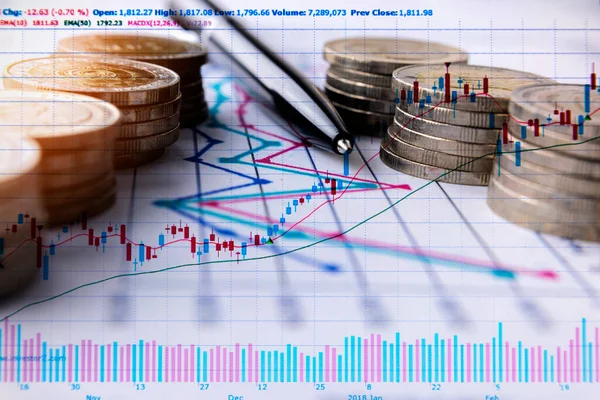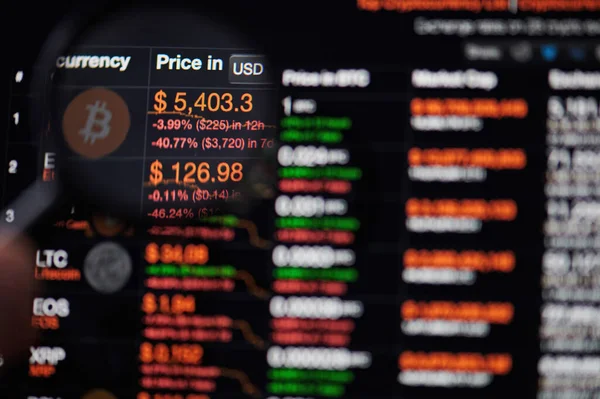In the realm of financial trading, Forex and Cryptocurrency markets have been recognized for their potential to yield substantial returns. However, they are also known for their highly volatile nature, which can lead to significant losses if not properly managed. Whether you’re a seasoned trader or a novice, understanding and developing strategies to manage volatility is crucial to succeed in these markets. This article will delve into the volatility in Forex and Crypto markets, examine their historical volatility, and explore key strategies for managing it effectively.
Understanding Volatility in Forex and Crypto Markets

Volatility refers to the degree of variation observed in the price of a financial instrument over a certain period. It is a critical component in both the Forex and Crypto markets. In the Forex market, volatility usually stems from economic indicators, interest rates, political instability, and global events. On the other hand, the Crypto market is primarily influenced by demand-supply factors, regulatory news, technological advancements, and market sentiment. While volatility can present trading opportunities, it also increases the risk, making it important for traders to understand its nature.
Examining Historical Volatility in Forex and Crypto Trading

Historical volatility is a vital measure used to gauge how much the price of a financial asset has moved in the past. This measure provides traders with a broader perspective of market behavior and potential price movements. In the Forex market, for instance, currency pairs like GBP/USD or EUR/USD have their unique historical volatility patterns. Similarly in the Crypto market, Bitcoin and Ethereum have exhibited different volatility rates over their lifetimes. Traders often use historical volatility to inform their trading strategies, risk management plans and to set appropriate stop-loss and take-profit levels.
Key Strategies for Managing Forex Market Volatility

Successfully navigating Forex market volatility requires strategizing.
- Using Technical Analysis: Traders often use technical analysis tools like Bollinger Bands or Average True Range to identify volatile periods.
- Implementing a Hedging Strategy: Forex traders can use different financial instruments, like options and futures, to hedge their positions and mitigate risk during volatile periods.
- Adopting Longer Time Frames: Traders can minimize the impact of short-term volatility by adopting longer time frames for their trades.
Handling Cryptocurrency Market Volatility: Best Practices

In the Crypto market, volatility management requires a unique approach.
- Diversification: Holding a diverse portfolio of cryptocurrencies can help balance the effects of volatility.
- Staying Informed: Regularly monitoring news and developments can help traders anticipate possible price swings.
- Using Automated Trading Bots: These can execute trades based on predetermined parameters, helping to capitalize on volatility while mitigating emotional trading decisions.
The Role of Risk Management in Volatile Markets

Risk management is a cornerstone in any trading strategy, particularly in volatile markets. It involves setting stop-loss orders to limit potential losses, using leverage wisely, and only trading with funds that one can afford to lose. Risk management also involves maintaining a well-diversified portfolio to spread potential risks. It is all about making informed decisions and being prepared for different market scenarios.
Future Trends: Navigating Volatility in Forex and Crypto Markets
The future of trading in these volatile markets relies heavily on the development of sophisticated tools and the adoption of advanced trading strategies. Artificial intelligence and machine learning are set to play a pivotal role in predicting market volatility and enhancing decision-making processes. Additionally, the use of blockchain technology in the Forex market could potentially reduce volatility by increasing transparency. Regardless, traders will need to remain adaptable and responsive to market changes.
In conclusion, volatility is a double-edged sword in both the Forex and Crypto markets. While it can provide lucrative trading opportunities, it also presents significant risks. Thus, understanding volatility, keeping an eye on historical patterns, and employing effective risk management strategies are all critical to successfully navigating these volatile markets. The future is likely to bring more advanced tools and strategies to the table, promising an exciting, albeit challenging, trajectory for Forex and Crypto market participants.






Diversification is key to managing Crypto market volatility.
Using trading bots sounds like a good way to handle Crypto volatility.
Risk management is essential in trading Forex and Cryptos.
I learned that historical volatility helps traders to make better decisions.
Interesting to see how Crypto market volatility is mainly due to demand and supply.
Hedging strategies can help reduce risks during volatile periods in Forex.
The article explains why volatility is important in trading Forex and Crypto.
AI and machine learning might help predict market changes in the future.
The article mentions using technical analysis to manage Forex volatility.
Now I understand how economic factors affect Forex volatility.